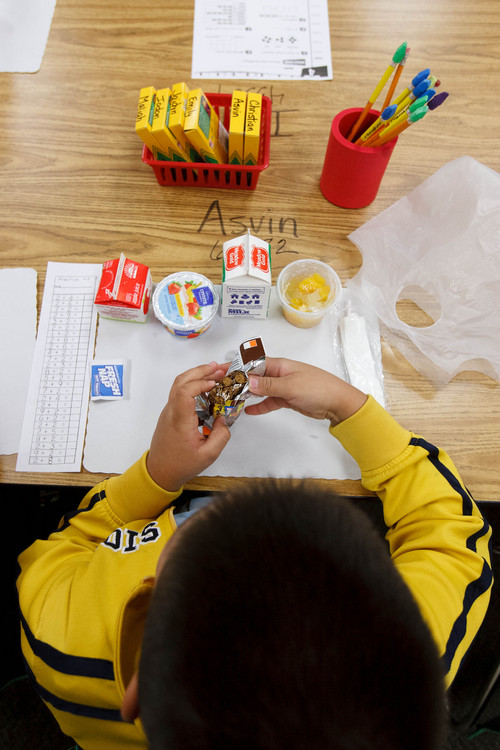This is an archived article that was published on sltrib.com in 2014, and information in the article may be outdated. It is provided only for personal research purposes and may not be reprinted.
Utah is last in the country — again — in providing breakfast at school to impoverished children, according to a new report that says the morning meal boosts learning and overall student health.
One in four Utah children live in households deemed "food insecure," said Gina Cornia, executive director of Utahns Against Hunger. About 36 percent of students in Utah schools qualify for free or reduced lunch.
But of that low-income group only a third get breakfast at school, according to the report from the Washington, D.C.-based Food Research and Action Center. In the 2012-2013 school year, that was equivalent to about 73,000 students. Utah also was last during the previous academic year.
But a spokesman for the Utah Office of Education says that school officials are working to expand the program. The state cannot dictate to local school districts how they implement the programs that are underwritten by the federal government, said Matt Anderson.
The numbers are not as bleak as they look, he said. "Eighty-six percent of the schools offering the School Lunch Program [in Utah] also offer the School Breakfast Program."
And where the School Breakfast Program is offered, it is often underused, Anderson noted. There are any number of reasons, including students not arriving at school early enough for breakfast.
Nationally, about half the students receiving free or discounted school lunch receive school breakfast. That amounts to about 10.8 million youngsters and represents an increase of 311,000 from the previous year, the FRAC report said.
New strategies, such as allowing students to eat breakfast in class, have yielded increases in student participation, according to the report.
"We could be doing more in Utah to ensure kids are getting the nutrition they need," Cornia said. "As we go into the start of the legislative session next week, we should be considering ways to increase the number of kids who are eating breakfast at school."
The Utah Office of Education is looking at models other than the most common one in Utah — breakfast in the cafeteria before school starts, Anderson said.
Those models include breakfast in class; breakfast after first period; and on-the-go types of breakfast foods.
This year, the state office offered a "School Breakfast Summit" to educate school districts about ways to implement the School Breakfast Program, Anderson said. But each school district must decide how it will best reach its low-income students for breakfast, he said.
Funding for School Lunch and School Breakfast programs comes through the U.S. Department of Agriculture under the Child Nutrition Act of 1966.
"There is a lot of interest in how we should address intergenerational poverty to make sure kids have a bright future," Cornia said. "The first step should be to ensure they start the day ready to learn — not hungry."









